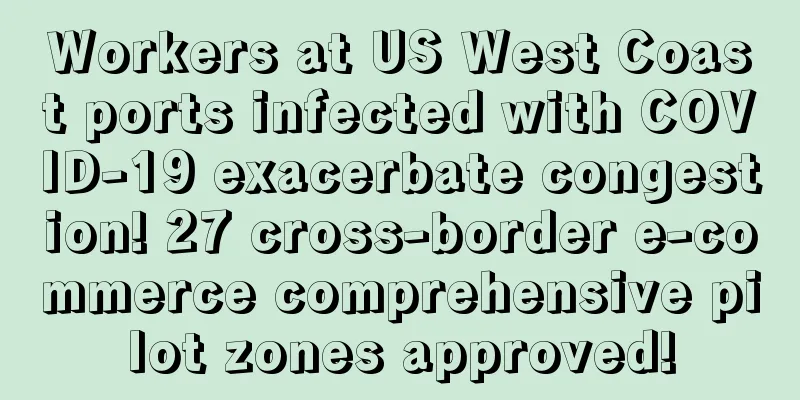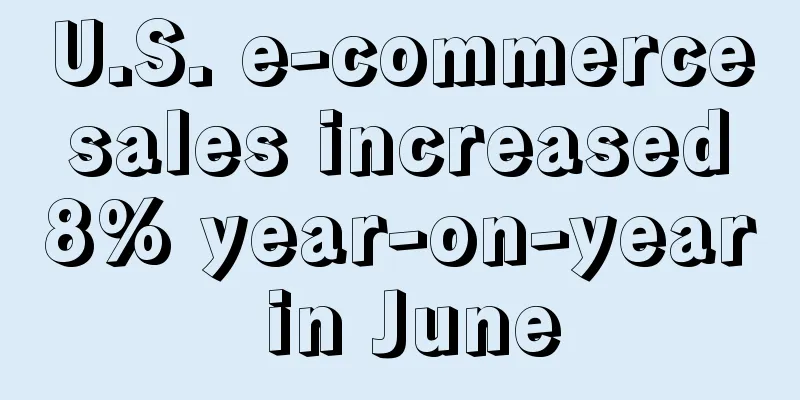|
Since the outbreak of the COVID-19 pandemic at the end of 2019, it has not only had a huge impact on the economic development of various countries, but has also endangered the lives of hundreds of millions of people. Today, the COVID-19 pandemic has become a major enemy of all mankind.
It is learned that as of 18:00 Eastern Time on February 9, a total of 77,210,718 confirmed cases of COVID-19 and 911,555 deaths have been reported in the United States. Now when you click on the real-time map of the COVID-19 epidemic in the United States, you will see a whole area of shocking red. Under such circumstances, the global supply chain is disrupted and cross-border sellers suffer innumerable losses. Recently, it was learned that the two major ports in the western United States (Port of Los Angeles and Port of Long Beach), which have been in a state of congestion, have encountered new situations due to the outbreak of the new coronavirus variant Omicron. More than 1,800 dock workers at ports in the western United States have been infected with the new coronavirus! It is learned that in the first three weeks of January this year, more than 1,800 dock workers on the West Coast tested positive for the new coronavirus, directly exceeding the 1,624 cases of workers infected with the new coronavirus in the whole year of 2021. Any relief the ports of Los Angeles and Long Beach might have gotten from stagnant import volumes during the Lunar New Year will be offset by labor shortages at the terminals and local warehouses caused by an outbreak of the new coronavirus variant Omicron, port leaders said. The latest data from the Port of Los Angeles shows that there are currently 85 container ships waiting to berth outside the Port of Southern California, which is a decrease from the previous week. However, there has been an increase in imported containers and empty containers. As of February 7, there were 56,112 imported containers at the Port of Los Angeles terminals, and 59,603 empty containers at the terminals and warehouses outside the terminals. According to maritime data, it will take at least eight to nine months for container lines to restore schedule reliability amid the COVID-19 pandemic and supply chain disruptions, but there is no sign that the situation will improve. It can be seen that the combined effect of the outbreak of Omicron, labor shortages, and too many empty containers at docks is leading to increased port congestion, and shipping rates will most likely rise further. Coincidentally, the outbreak of the new coronavirus epidemic has affected more than just foreign transportation. It is learned that as of February 9, Shenzhen has found 7 cross-border truck drivers who tested positive for the new coronavirus nucleic acid. Shenzhen has also responded to this recently, strengthening the fixed-point management of the "three points and one line" and relevant traffic nodes along the way for cross-border truck drivers between Shenzhen and Hong Kong, setting up special service facilities, clarifying protection requirements, and ensuring that cross-border drivers implement full closed-loop operations after entering the country. Based on this, we would also like to remind relevant sellers to be prepared for delays in ocean shipping logistics and pay close attention to cross-border logistics information so that they can take appropriate measures in a timely manner. Of course, although the situation of raging epidemics abroad and continued port congestion has not changed, there is not all good news recently. Just recently, the State Council officially announced that it agreed to establish 27 new cross-border e-commerce pilot zones. The State Council approved the establishment of cross-border e-commerce pilot zones in 27 cities It is learned that on February 8, the "State Council's Approval on the Establishment of Cross-border E-commerce Comprehensive Pilot Zones in Ordos and 27 Other Cities and Regions" was released, agreeing to establish cross-border e-commerce comprehensive pilot zones in Ordos, Yangzhou, Zhenjiang, Taizhou, Jinhua and other 27 cities and regions. According to statistics, after this addition, China's cross-border e-commerce comprehensive pilot zones have reached 132. The national policy support for the cross-border e-commerce comprehensive pilot zone is undoubtedly a great help to cross-border sellers in the cross-border e-commerce comprehensive pilot zone. Here are some of the most valuable policy measures that provide strong support for the development of cross-border e-commerce: 1. Reduction and exemption of value-added tax and consumption tax For goods that cross-border e-commerce retail export enterprises in the cross-border e-commerce comprehensive pilot zone do not have valid purchase certificates, they are exempt from value-added tax and consumption tax on export if they meet the specified conditions. 2. Assessment and collection of income tax Export enterprises within the comprehensive pilot zone that meet certain conditions will try out the method of assessing and collecting corporate income tax, and assess and collect corporate income tax using the taxable income rate, which will be uniformly determined at 4%. 3. Customs clearance facilitation For the export of eligible cross-border e-commerce retail goods within the cross-border e-commerce comprehensive pilot zone, the customs will supervise and release them through the convenient measure of "list verification and release, consolidated declaration", so as to improve the customs clearance efficiency of enterprises and reduce customs clearance costs. A person will encounter many opportunities in his life, but opportunities only favor the prepared mind.
I also wish cross-border sellers here to seize the opportunity, ride the wind, and have no worries about orders in 2022! |










